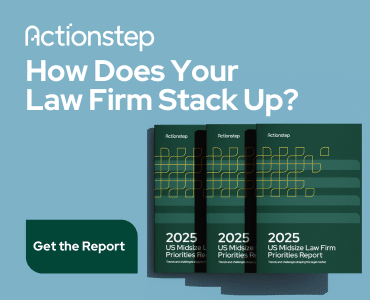Lawyers encounter hypothetical and conditional situations daily. Two powerful grammatical tools, the subjunctive mood and conditional phrasing, help lawyers write about hypotheticals with precision and clarity.

Table of contents
Let’s Review: Subjunctive Mood and Conditional Phrasing
- The subjunctive mood helps express an idea or state of being that is hypothetical, wished for, or otherwise contrary to fact. Use it to discuss potential scenarios, assess consequences, and convey conditions that rely on uncertain outcomes.
- Conditional phrasing shows cause and effect in possible situations. Use conditionals to explain legal texts and outline contractual obligations — essentially, to create a map of possibilities.
Even native English speakers find it unfamiliar and challenging. However, trying to avoid the awkward rules by substituting simpler or expected verb forms risks losing precision and clarity.
Improper use of the subjunctive or conditionals could also risk legal consequences.
Grammar Cornerstones: Tense and Mood
Tense and mood work together to express a verb’s full meaning. Tense pinpoints when an action happens (past, present or future), and mood reflects the writer’s attitude or the reality of a situation. Conditionals are used in if-then statements that link tenses and moods, adding depth and specificity.
English has four moods:
- Indicative for stating facts and opinions
- Imperative for delivering orders, requests or advice
- Interrogative for asking questions
- Subjunctive for wishes, hypotheticals and other unreal conditions
Writers rarely struggle with indicative and imperative, but many are lost regarding the subjunctive, though it is a cornerstone in formal writing, especially in legal rules, orders and requests.
Why the Subjunctive Is Important
Since lawyers deal with ambiguous situations and unpredictable futures, they must judge the degree of imagination applied to the facts. The choice of the subjunctive mood often depends on whether a situation is already true. The subjunctive form shows action that isn’t necessarily true, might not happen or did not happen.
Consider the difference in meaning between these two sentences:
- Subjunctive: I insist that Bob be here. (Bob needs to be here in the future but is not here and might not come.)
- Indicative: I insist that Bob is here. (Bob is here, but someone doesn’t believe the speaker.)
Subjunctive and past tense verbs almost always look the same, so many English speakers and writers use the past tense for all subjunctive cases. That overcorrection results in common sentences like “If I was rich, I would buy 10 yachts,” when the correct formal version is, “If I were rich, I would buy 10 yachts.”
Because present tense verbs and infinitives are almost always the same, some writers assume that subjunctive is just present tense. This mistake is most common when the subject is third-person singular (he, she, it, the company, the damage) because these are the only times that the present tense (except be) differs from the infinitive. For example, instead of “It’s important that he arrives on time,” you would write, “It’s important that he arrive on time.”
Understanding Conditional Phrasing
Conditional statements and subjunctive mood often go together. A conditional sentence also expresses untrue or uncertain information. While all if–then clauses show a cause-effect relationship, modal verbs (will, can, would, could, should and others) show the effects of possible future or imaginary past causes.
Teachers of teenagers or adults learning English often present four conditional forms to their students. This is more useful to non-native English learners because some other languages break down subjunctives in this way. However, native speakers often mix up the first, second and third conditional forms, so it’s important to know the difference to use them correctly in formal contexts.
- The zero conditional is used for true concepts and does not use the subjunctive. For example, “In law, if a contract is breached, legal consequences arise.”
- The first conditional describes future possibilities. The verb after then (written or implied) needs to have a modal verb or be in the future tense. For instance, “If the company meets its sales targets, then it will expand its marketing team.”
- The second conditional describes imaginary but impossible situations. This structure always has a past-tense subjunctive verb (or were for the verb be) in the if clause and would or could in the then clause. For example, “If I liked that team, then I would go to their games.”
- The third conditional describes things that didn’t happen and can’t happen anymore. This structure always has the subjunctive had plus a past participle in the if clause, and a past-tense modal in the then clause. For example, “If the marketing campaign had reached a wider audience, then the company could have seen higher sales figures.”
Use conditional phrasing with care. The wrong conditional statement or an incorrect verb form can lead to ambiguity or misunderstanding — a sin in legal writing.
The Costs and Consequences of Sloppy Legal Writing
From misinterpretation of intent to legal consequences and loss of credibility, the price can be high, including:
- Misinterpretation of Intent or Obligation: Mistakenly using the indicative mood can change the meaning of a sentence and might lead to confusion about the degree of obligation or the reality of a situation.
- Ambiguity: The wrong conditional form might make it unclear whether a condition applies in the past, present or future, or whether it is realistic or hypothetical.
- Inefficiency: If a document is unclear, it may need to be revised or clarified. This can lead to extra work and delays.
- Legal Consequences: In legal documents, every word matters. An incorrectly used subjunctive or conditional could change the obligations of parties, the interpretation of a clause, or the enforceability of a provision, leading to disputes or litigation.
- Loss of Credibility: Consistently making grammatical mistakes could undermine the writer’s credibility and create doubts about their attention to detail in other matters.
Conclusion
Subjunctive mood and conditional phrasing are important tools for precision. By understanding when and how to use them correctly, legal writers can prevent misinterpretation, reduce ambiguity, maintain credibility, increase efficiency, and avoid potential legal consequences.
Image © iStockPhoto.com.

Sign up for Attorney at Work’s daily practice tips newsletter here and subscribe to our podcast, Attorney at Work Today.
















